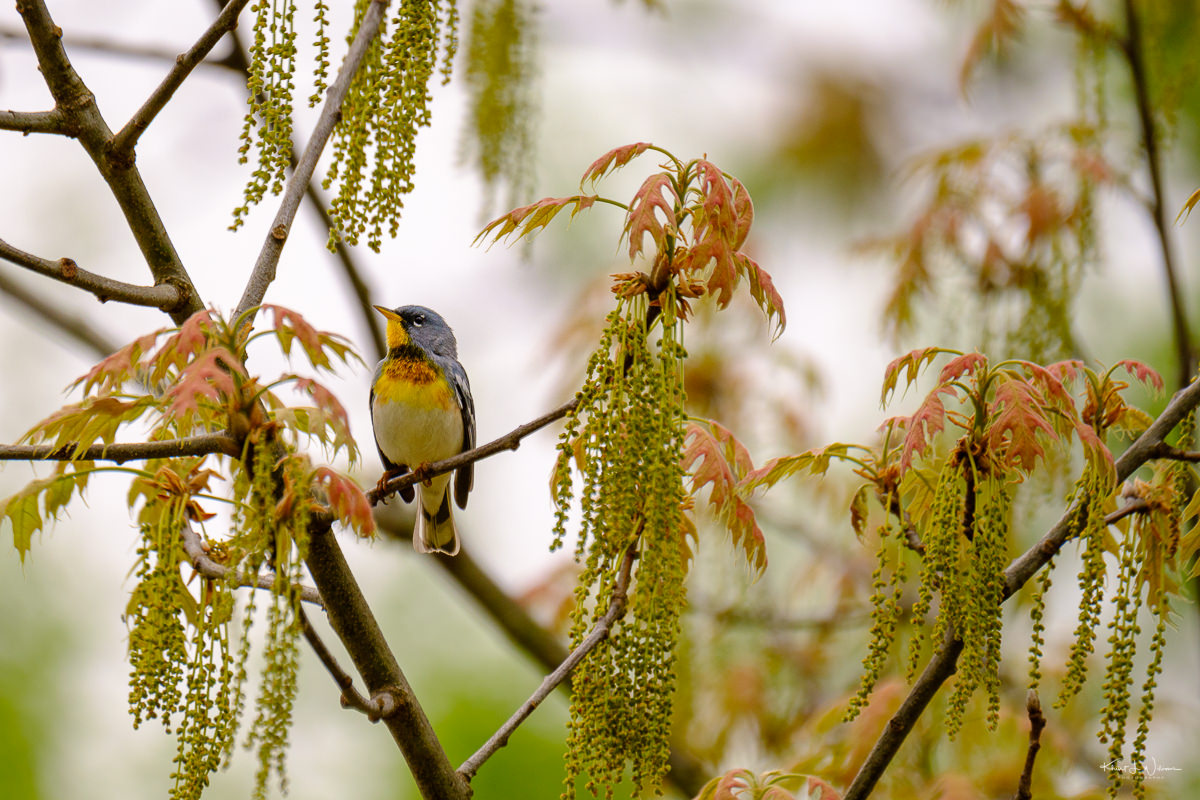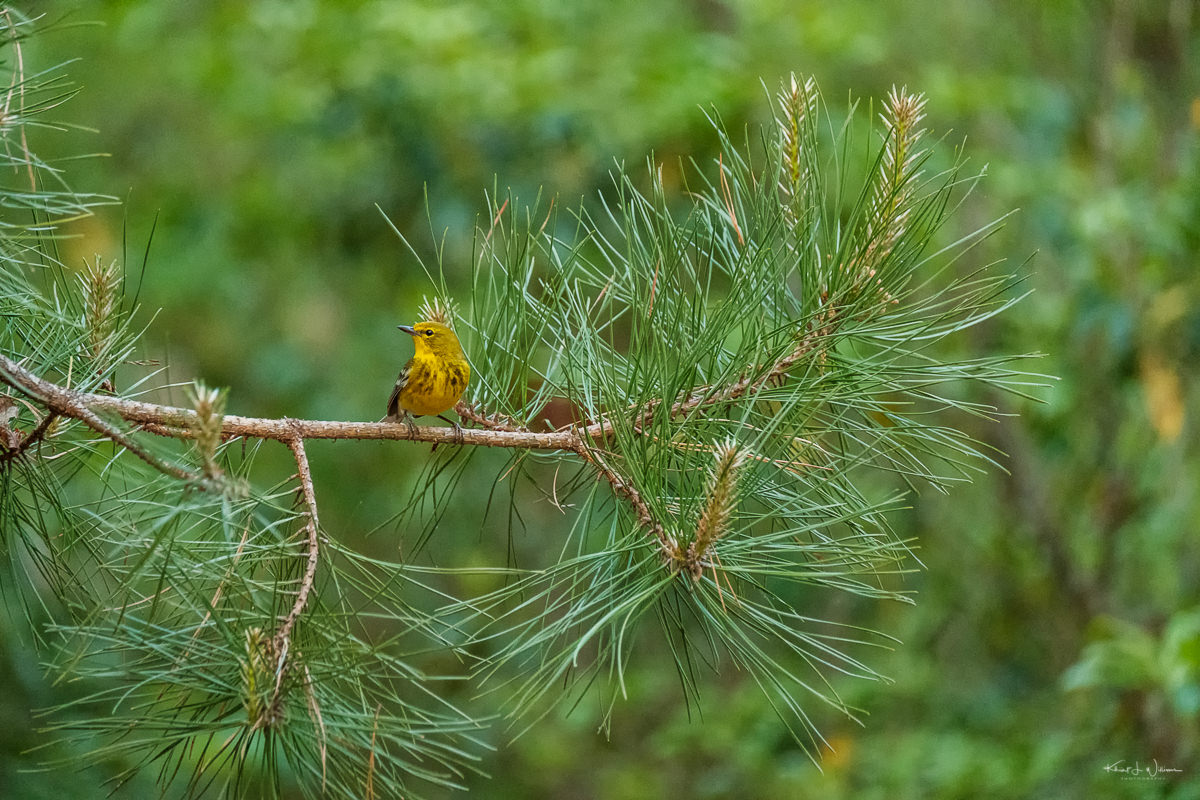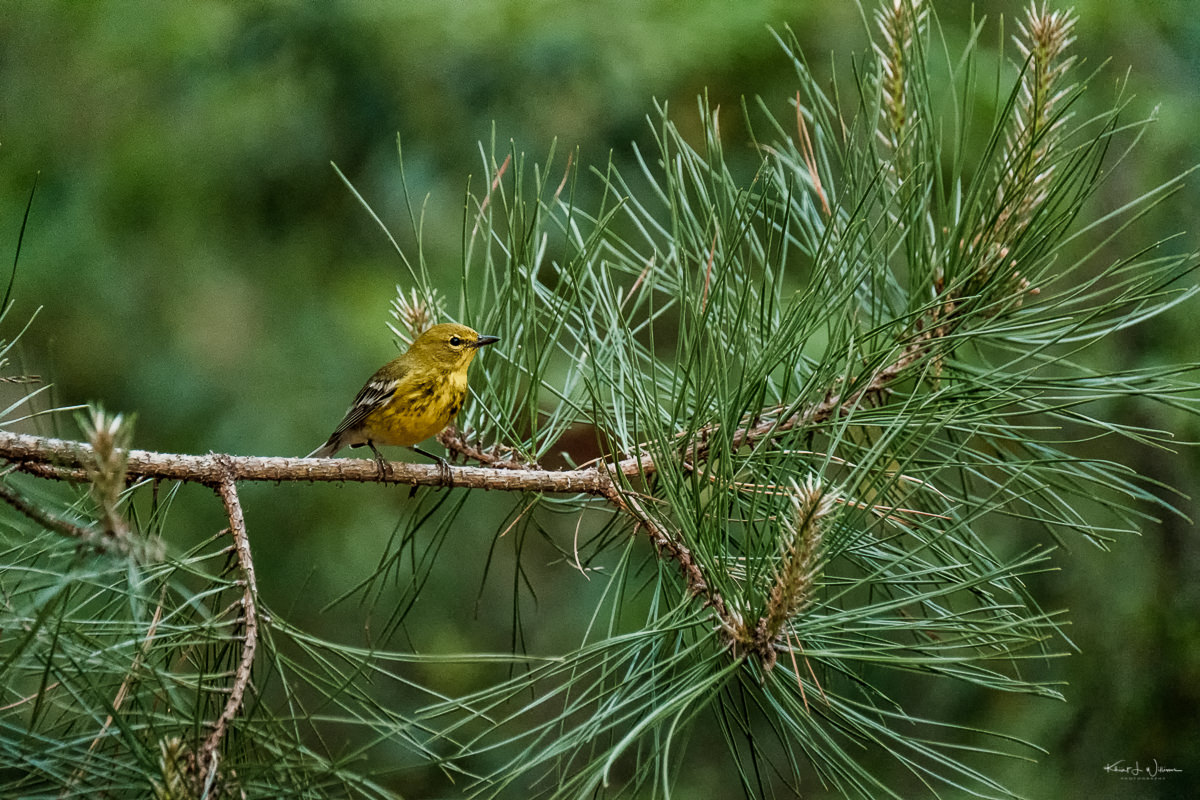A Northern Parula warbler perches on a slender branch amid the emerging spring in Stokes State Forest Park. The background showcases the emergence of new delicate foliage in shades of red and green. Hanging catkins resemble a chandelier surrounding the warbler, which is decorated in a mosaic of blues and yellows.
This Northern Parula has a slate-blue back, a vibrant yellow throat extending down its chest, and a distinctive patch of rusty or chestnut colouring within the yellow. Its breast and belly transition to greyish-white. Dark blue-grey feathers with two white wing bars grace its wings, contributing to its complex plumage. The head features the same slate blue with a white eye crescent.
Despite its size, this Northern Parula, nearly hidden amid the springtime foliage, highlights the rich ecosystem of Stoke State Forest Park in Sandyston, New Jersey. The parula performs as a feathered artist, painting the forest with its melodious song.
I stumbled upon this photograph while organising my Adobe Lightroom catalogue. It was among a collection of warbler images captured during a workshop in Stoke State Forest Park in the spring of 2022.




